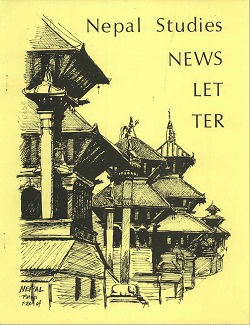Author Biography
John Bray is an independent scholar based in Singapore. He was President of the International Association for Ladakh Studies from 2007 to 2015 and is a member of the editorial board of HIMALAYA.
Martijn van Beek (PhD, Social Anthropology, Cornell, 1996) is Associate Professor of Anthropology at the University of Aarhus (Denmark).
The late Tsering Dhundup Gonkatsang (1951-2018) was Instructor in Tibetan at the University of Oxford.
Phuntsok Wangchuk was born in Ladakh and is an ordained monk in the Tibetan Buddhist tradition. He is currently a research student at the Centre of Buddhist Studies at the University of Hong Kong.
Abstract
In 1933 the Indian scholar and social activist Rahul Sankrityayan (1893-1963) compiled a set of four Tibetan-language readers and a grammar for use in Ladakhi schools, together with his Ladakhi colleague Tsetan Phuntsog. The readers contain a mix of material from Western, Indian, Ladakhi and Tibetan sources. This includes simple essays about ‘air’ and ‘water’, selections from Aesop’s fables, Indian folk stories, biographies of famous people in Ladakhi and Tibetan history, poems by Ladakhi authors, and extracts from the Treasury of Elegant Sayings by Sakya Pandita Kunga Gyaltsen (1182-1251). This essay begins with a review of earlier Tibetan-language schoolbooks published in British India, and then discusses the circumstances that led to Sankrityayan’s involvement in the Ladakh project. The second part of the essay examines the contents of the readers and the grammar, including—where possible—the authorship of particular sections. Finally, the essay briefly reviews linguistic developments in Ladakh since the publication of the textbooks.
Acknowledgements
The original stimulus for the research leading to this paper was the conference on “Rahul Sankrityayan (1893-1963): Maha Pandita in the Land of Snow” at the Indira Gandhi National Centre for the Arts “New Delhi” in March 2018. For help in tracking down sources, the authors are grateful to: Zhidey Kundan, Thsespal Kundan, Naomi Sonam, Sonam Phuntsog (Achinathang), Nawang Tsering Shakspo, Rigzin Chodon, Isrun Engelhardt, Bettina Zeisler, Diane Lange, Hartmut Walravens and the staffs of the Library of Tibetan Works and Archives (Dharamsala), the University Library in Leipzig, and the State Library in Berlin. The authors thank Lorraine Parsons of Moravian Church House, London, for permission to publish the photographs of Joseph Gergan and Tsetan Phuntsog; and Jaya Sankrityayana for the photograph of her father in Figure 3. Finally, John Bray would like to express particular appreciation for the work of our co-author Tsering Gonkatsang (1951-2018), who never lived to see the final version. In his combined role as a teacher and Tibetan linguist, Tsering approached the topic of this article with particular interest and enthusiasm.
Creative Commons License

This work is licensed under a Creative Commons Attribution-Noncommercial-No Derivative Works 4.0 License.
Recommended Citation
Bray, John; van Beek, Martijn; Gonkatsang, Tsering; and Wangchuk, Phuntsok. 2020. Rahul Sankrityayan, Tsetan Phuntsog and Tibetan Textbooks for Ladakh in 1933. HIMALAYA 39(2).
Available at:
https://digitalcommons.macalester.edu/himalaya/vol39/iss2/11


